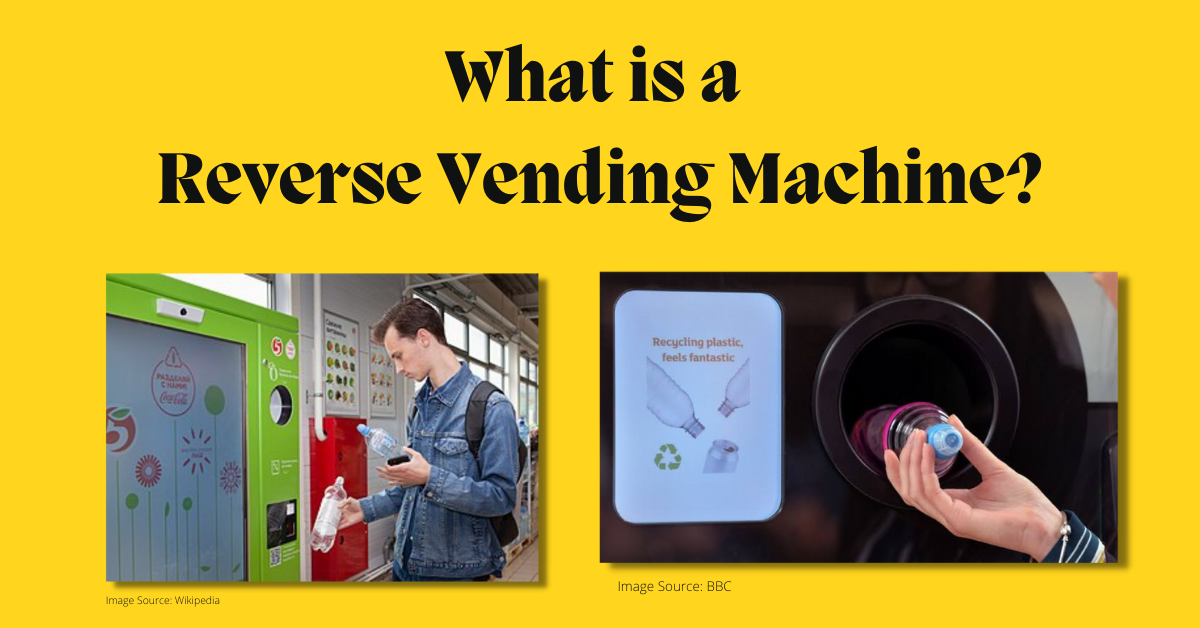If you follow our blog, you know we love vending machines! All shapes, sizes, and types. One other such type of vending machine is the Reverse Vending machine.
The 3 Rs
The “3Rs” philosophy refers to the principles of reducing waste, reusing, and recycling resources and goods.
Reducing is selecting to use something with care in order to limit the quantity of trash produced.
The continued use of objects or parts of items that still have usable qualities is referred to as reusing.
Recycling is the utilization of trash as a resource. Waste reduction may be accomplished in an effective manner by focusing largely on the first of the three Rs, “reduce,” followed by “reuse,” and finally “recycle.”
We are placing so much importance on the 3Rs and reverse vending machines are of utmost importance.
What are Reverse Vending machines?
The reverse vending machine (RVM) is a machine that accepts empty and old bottles or cans or plastic and then provides money or other types of incentives to the recycler based on the number of receptacles recycled.
Who invented the Reverse vending machine?
Wicanders, a Swedish business, created this gadget in the late 1950s. It was functional, but it was very simple and one-dimensional, taking just plastic bottles one at a time.
Other recycled materials, such as aluminum or glass, could not be accepted, nor could vast numbers of bottles.
Why should we use a Reverse vending machine?
Every year, customers use about 1.4 trillion beverage containers globally, and the objective of the reverse vending machine is to assist in minimizing and recycling this trash.
The majority of our recycled beverage bottles end up in landscapes, landfills, seas, and rivers. To address this waste, the RVM provides recycling incentives.
Depending on the location of the machine, these incentives may include cash refunds, charitable donations, metro transport tickets, paid telephone cards, or cheap tickets to amusement parks.
Because of these incentives, people are likely to be more motivated to recycle because it benefits not only the environment but also them.
How do reverse vending machines work?
The reverse vending machine works in a sequence of processes. The recycler begins by inserting empty drinking containers into the receiving hole.
The bottle or can is then turned so that the Universal Product Code (UPC) scanner can read the UPC code on the bottle. Each individual commerce item is granted a number identifier to indicate where it was made.
After the container has been scanned and recognized, it is entered into a database to track how many bottles the recycler is returning.
The beverage containers are subsequently crushed to a smaller size so that the reverse vending machine has greater storage space. Recyclers can then select the type of incentive they want.
Finally, after the storage capacity is reached, the beverage containers are manually collected and processed to guarantee that they are returned to their corresponding recycling material firm.
Advantages of Reverse vending machines
There are several benefits to employing reverse vending machines.
- They improve the environment by reusing materials and minimizing the demand for raw resources to manufacture new drinking containers.
- RVMs are also conveniently located in public places such as grocery shops, petrol stations, schools, parks, and so on, making them easily accessible to users.
- They are simple to handle since the machine separates recyclable materials (plastic, glass, and aluminum) rather than doing it manually.
- RVMs have a capacity of 200 plastic beverage containers and 900 cans, indicating that these machines can keep a significant amount of debris before needing to be emptied.
- Although they can handle a large number of recyclable materials, they are not large machines and hence do not take up much room.
- Furthermore, RVMs can be advantageous to enterprises. Stores with RVMs might provide store-specific incentives (like discounts) so that consumers who appreciate recycling through the RVM would return to recycle and purchase on a frequent basis.
- RVMs are incentive devices, not only for the environment but also for the recycler, benefits.
The increase in garbage output increased environmental consciousness, and government prohibitions against unlawful dumping have all contributed to the rise of the worldwide reverse vending machine industry.
How much does the reverse vending machine cost?
The only downside of reverse vending machines is that they are a little expensive and hence not a lot of organizations can afford to have one.
Reverse vending machines are priced starting at INR 2 lakhs and can go anywhere from INR 5 lakhs.
Conclusion
Because of the increased innovation and growth of resource recycling initiatives, the worldwide market for reverse vending machines is rapidly growing.
We hope you liked this informative blog. Please ask your questions or share your feedback in the comment section below. Thank You.


